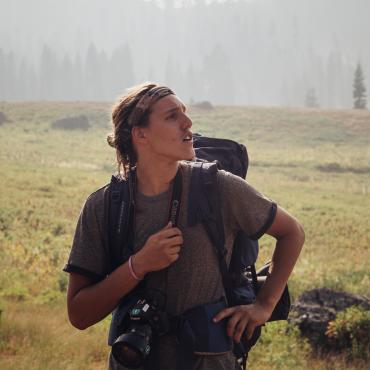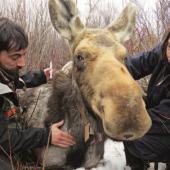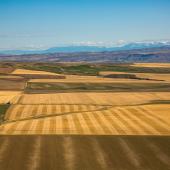Don't Fence Me In
The Southwest Montana Fencing for Wildlife Program.
In June of 2021, FWP wildlife biologist Vanna Boccadori backpacked 55 miles along the Big Hole Valley near Wisdom. But she wasn’t just out for a stroll. Boccadori was following a migration route for pronghorn sheep, and she wanted to figure out how many man-made barriers to migration lay along the pronghorns’ path. On her hike—which traversed only about half of the pronghorn’s migratory route—she found a fence almost every mile.
Fast forward four years, and the work of Boccadori and other FWP biologists has helped to remove or replace over 70 miles of fencing through the Southwest Montana Fencing for Wildlife Program. The program is now run by the National Wildlife Federation’s (NWF) wildlife project coordinator, Collin Peterson, and it’s on track to remove or replace another 35 miles of fencing in 2025. NWF focuses on woven-wire fencing, which is particularly disruptive to pronghorns and other ungulates. Beaverhead County is littered with it from old sheep farms, and pronghorns are especially prone to getting caught in its wire teeth.
NWF uses GPS collar data gathered by FWP biologists like Boccadori to focus on migratory corridors and areas where they can have the largest impact on the passage of wildlife. This includes working on both public and private lands, and the group works closely with landowners to replace old fencing with wildlife-friendly alternatives or remove it altogether. In July, NWF partnered with Montana Backcountry Hunters & Anglers to organize a fence-pull near Melrose in the foothills of the Highland Mountains, and a team of over 20 volunteers showed up to tear down the pronghorn impediment. NWF works with volunteer teams and youth crews, and it partners with other organizations like the Southwest Montana Sagebrush Partnership to organize fence-pulls. For ways to get involved, visit nwf.org.












